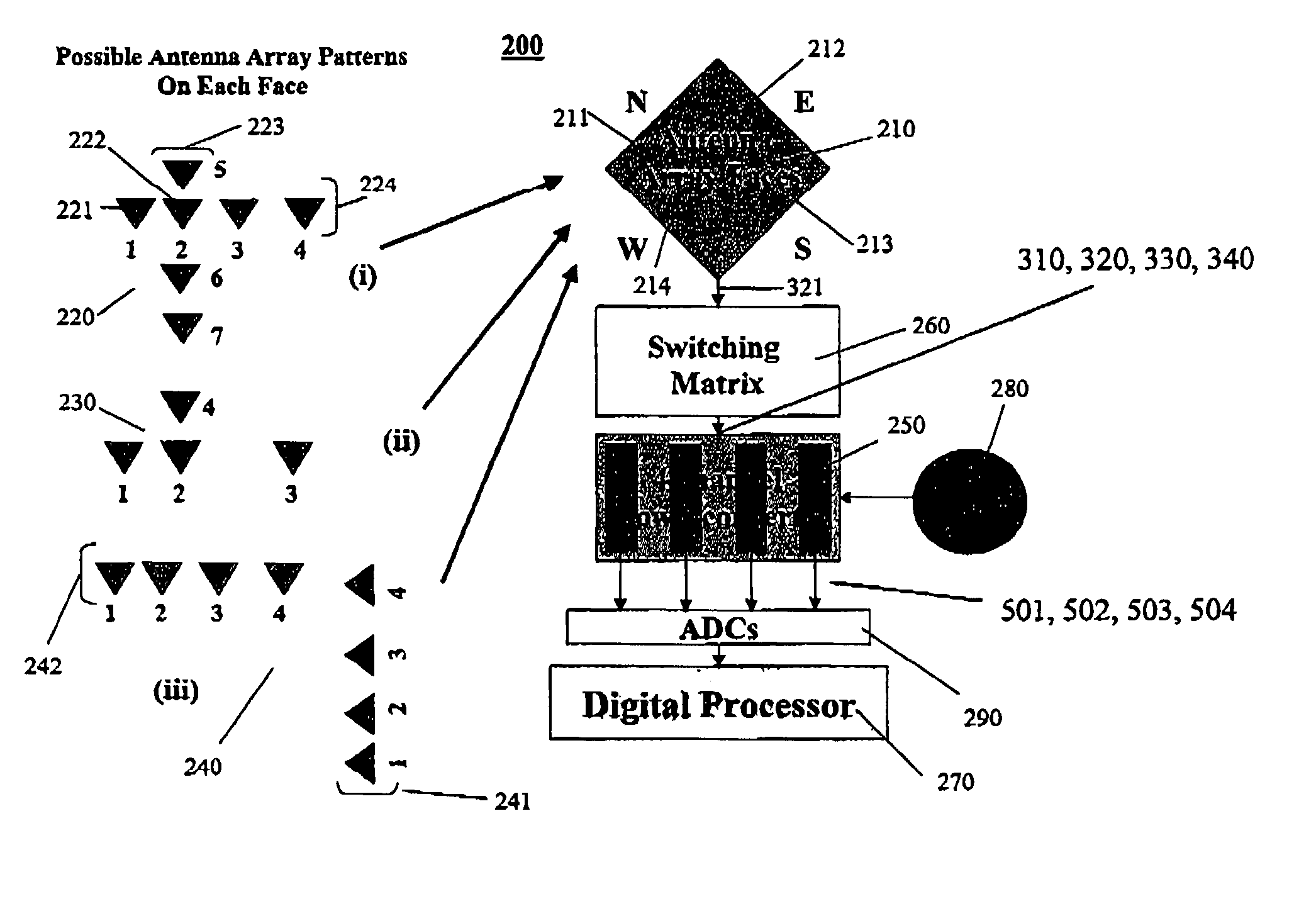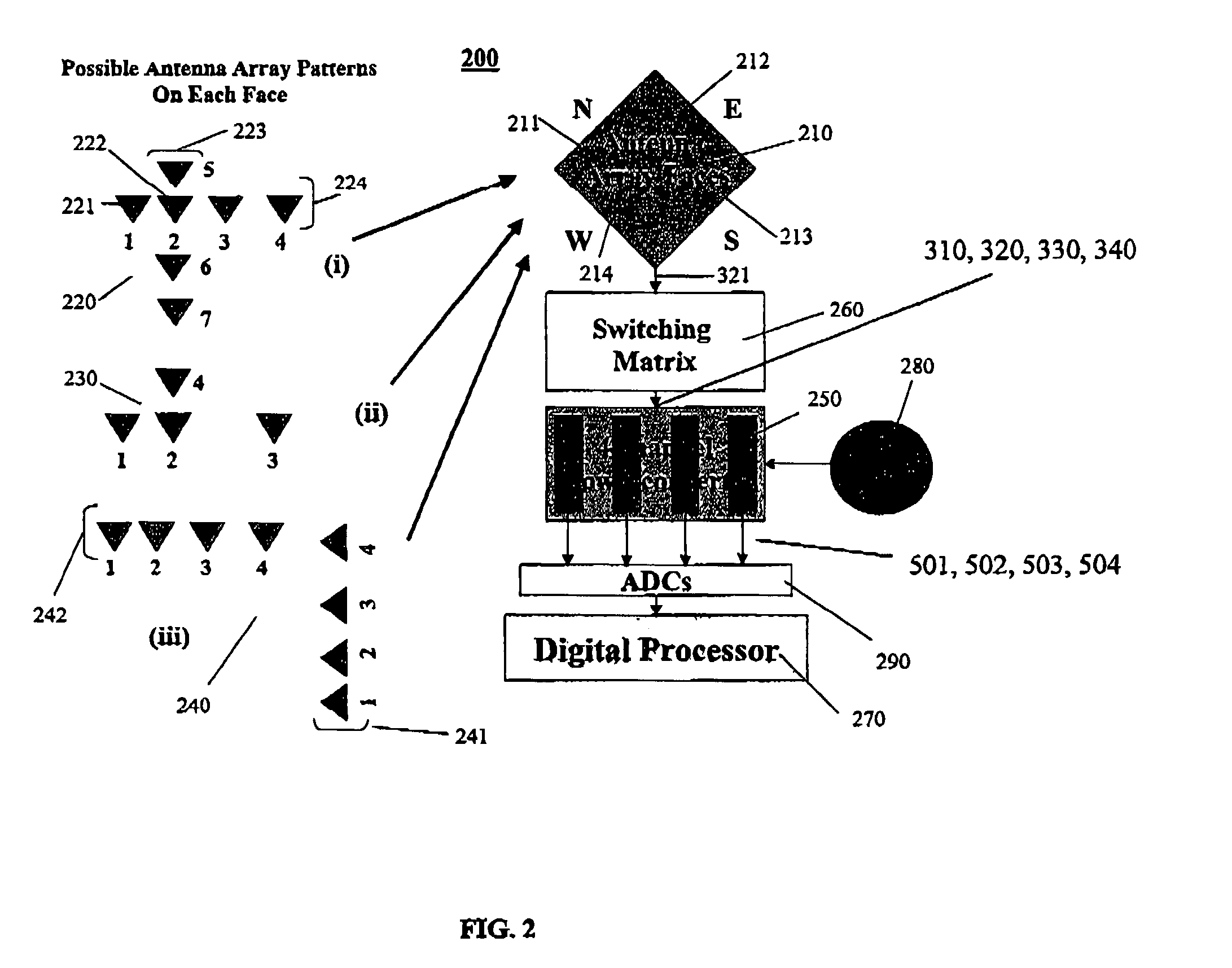Adaptive multi-channel, multi-function
a multi-functional, adaptive technology, applied in the field of adaptive multi-channel, multi-function, can solve the problems of difficult to differentiate and sort out intercepted radar signals using coarse conventional parameters alone, drastic reduction of peak transmitted power, and ambiguity in sorting, classification and identification processes, etc., to achieve good compromise between performance and cost, reduce hardware and total system cost, and improve the effect of cost and component utilization
- Summary
- Abstract
- Description
- Claims
- Application Information
AI Technical Summary
Benefits of technology
Problems solved by technology
Method used
Image
Examples
Embodiment Construction
[0043]In the following description, numerous specific details are set forth to provide a thorough understanding of the invention. However, it is understood that the invention may be practiced without these specific details. In other instances, well-known software, circuits, structures and techniques have not been described or shown in detail in order not to obscure the invention. The term “data processing system” is used herein to refer to any machine for processing data, including the computer systems and network arrangements described herein. In the drawings, like numerals refer to like structures or processes.
[0044]In general, the invention described herein provides a four-channel adaptive architecture for multi-function digital intercept receivers. The adaptive architecture performs the three basic functions typically required of modern intercept receivers, namely, it can be used to: (a) precisely measure and characterize conventional pulsed radar signals; (b) detect and charact...
PUM
 Login to View More
Login to View More Abstract
Description
Claims
Application Information
 Login to View More
Login to View More - R&D
- Intellectual Property
- Life Sciences
- Materials
- Tech Scout
- Unparalleled Data Quality
- Higher Quality Content
- 60% Fewer Hallucinations
Browse by: Latest US Patents, China's latest patents, Technical Efficacy Thesaurus, Application Domain, Technology Topic, Popular Technical Reports.
© 2025 PatSnap. All rights reserved.Legal|Privacy policy|Modern Slavery Act Transparency Statement|Sitemap|About US| Contact US: help@patsnap.com



